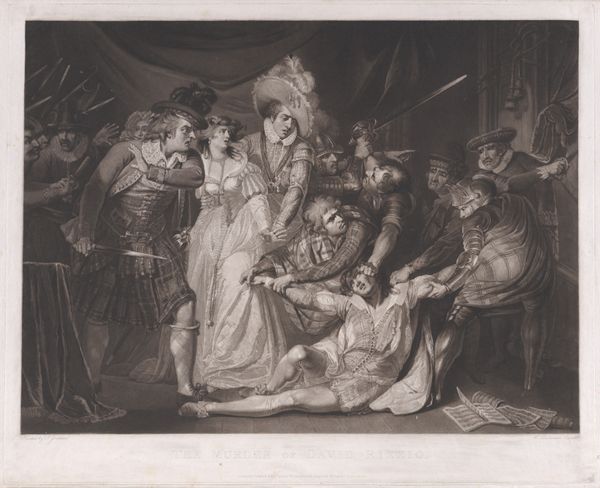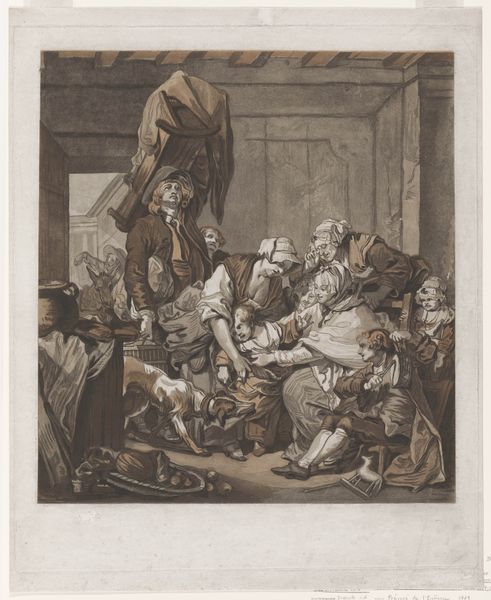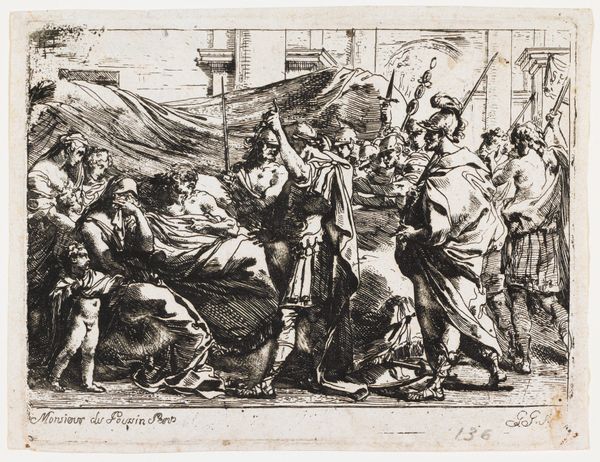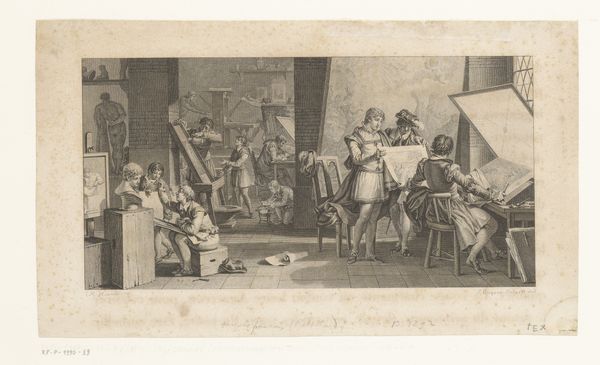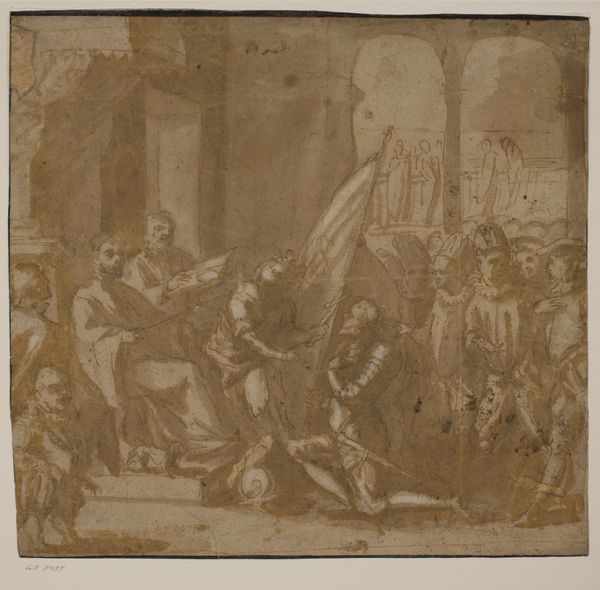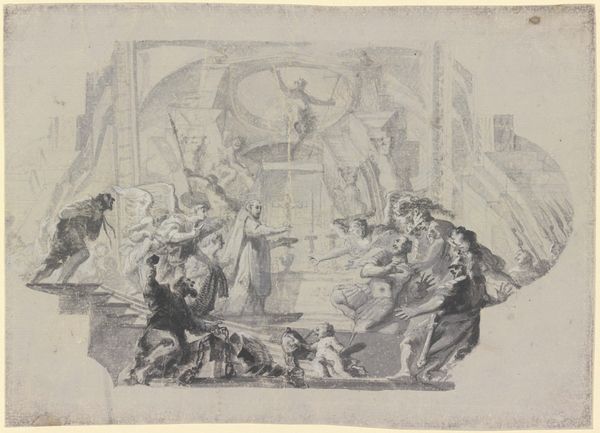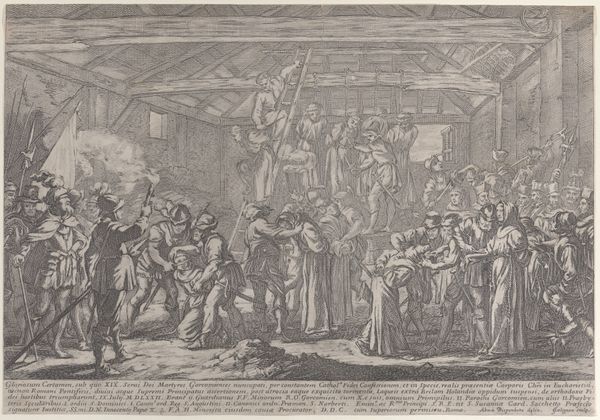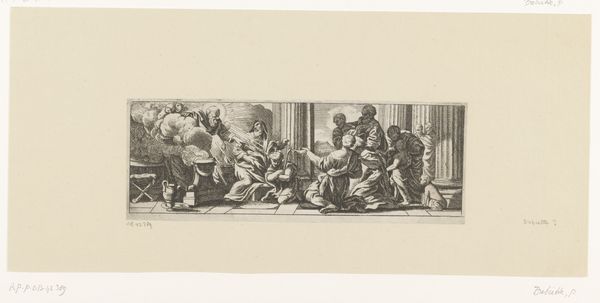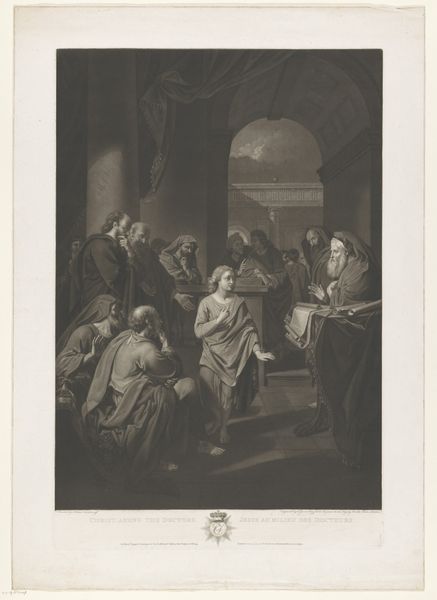
Der Tod des Germanicus (The Death of Germanicus) 1797
0:00
0:00
print, engraving
#
print photography
#
neoclacissism
#
narrative-art
# print
#
figuration
#
history-painting
#
academic-art
#
engraving
Dimensions: 21 1/16 × 26 7/8 in. (53.5 × 68.26 cm) (image)22 3/4 × 26 7/8 in. (57.79 × 68.26 cm) (plate)23 1/8 × 27 3/16 in. (58.74 × 69.06 cm) (sheet)
Copyright: Public Domain
Editor: This is "The Death of Germanicus," an engraving made in 1797 by Johann Joseph Freidhoff. The scene is really quite striking and solemn. It looks like a staged play; the characters, with their sorrow and gestures, are positioned carefully. How would you interpret this work? Curator: I see a powerful expression of stoicism in the face of death. Note how Freidhoff, working within a Neoclassical style, employs symbolism to tap into deep cultural memory. Germanicus, though dying, is surrounded by figures representing duty and loyalty, key virtues within Roman society. Do you see how their gestures, while sorrowful, also convey resolve? Editor: I do, now that you point it out. It’s like they’re vowing revenge or promising to uphold his legacy. Curator: Precisely! This image builds on the earlier work of Nicolas Poussin. By visually linking his work to well-known artistic tradition and history, Freidhoff invokes not just the literal death of Germanicus but also all the cultural weight his figure carried: honor, service to the state, family, leadership. Even the architecture speaks to that. The setting is stark and classicising, intended to echo an age of heroism and moral clarity. Editor: So the setting and the way the figures are posed reinforces this message of strength, even in death? Curator: Exactly. It transforms a personal tragedy into a public testament. Notice also how the faces – though individualized – become types expressing particular emotions tied to duty: grief, anger, resolve. The artist uses their individual grief and anger as symbols. They remind viewers about Roman values in that specific moment of European History and unrest. What are your thoughts? Editor: I didn’t catch that depth on my first look, but I'm struck now by how carefully constructed it all is, like a visual argument about leadership and sacrifice. Curator: Indeed. It’s an engraving that asks us to remember, to feel, and perhaps, to emulate those values in our own lives.
Comments
minneapolisinstituteofart almost 2 years ago
⋮
One of Mia’s greatest treasures in Nicolas Poussin’s painting The Death of Germanicus, completed in 1627. Immediately recognized as a masterpiece, it became the model for classicizing paintings for the next two centuries. Not only did it treat the timeless themes of death, grief, loyalty, and revenge, it also set the standard for translation of ancient Roman relief sculpture into modern painting. But how could that single painting exert such influence' Commissioned by Cardinal Francesco Barberini, it remained with descendants of the Barberini family until 1958, when Mia purchased it. Painted copies and prints, such as the present one, spread the fame of Poussin’s masterpiece. Etchings based on the painting were made in the 16- and 1700s, but Johann Joseph Freidhoff’s mezzotint was novel in its translation of the image through means that were predominantly tonal rather than linear. The result is a dramatic nocturne, somewhat more tenebrous than Poussin’s painting, thus in keeping with the Romantic spirit of German art of the late 18th century—a reminder that viewers of each generation bring their own unique vision to older works of art.
Join the conversation
Join millions of artists and users on Artera today and experience the ultimate creative platform.
